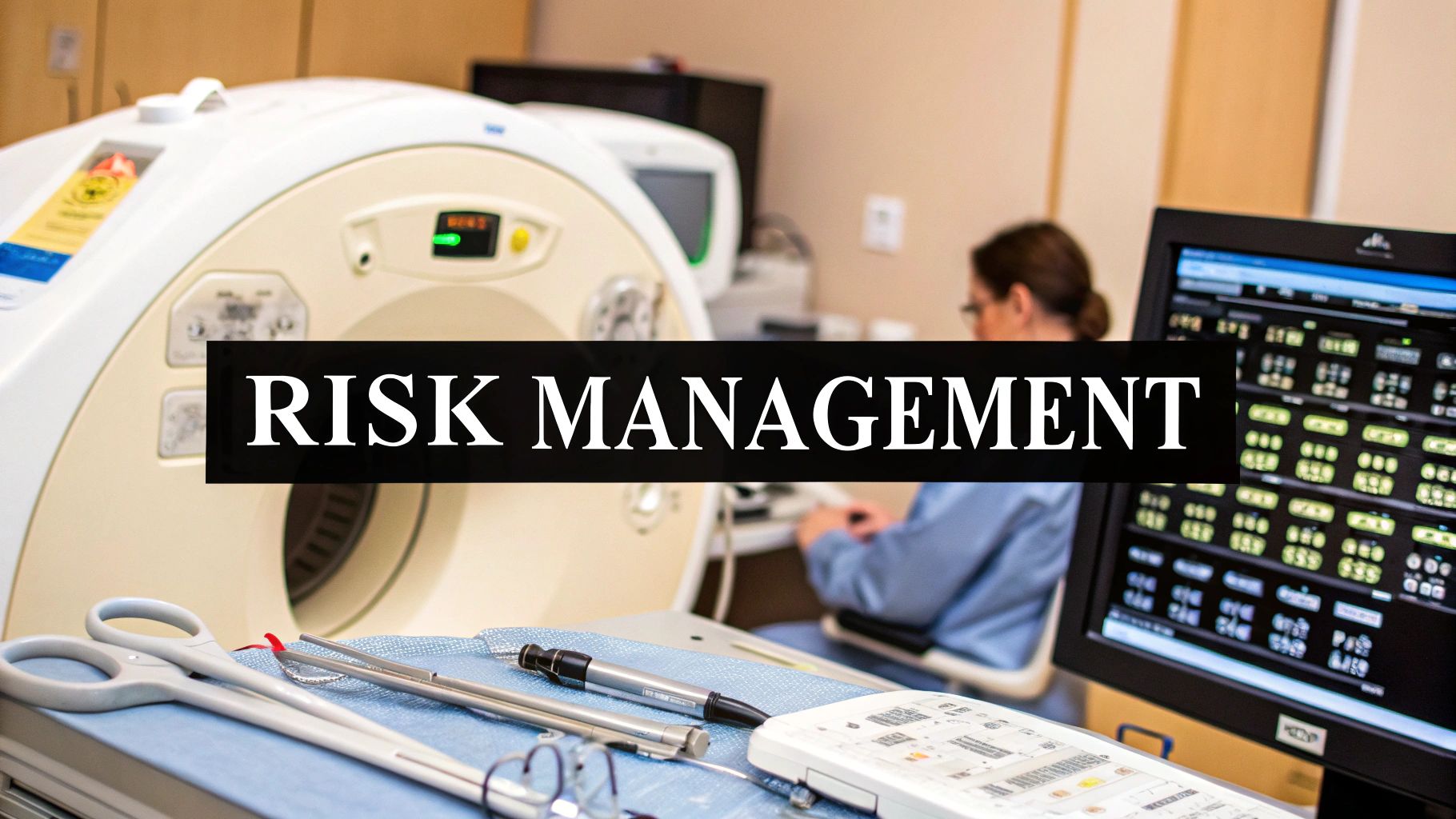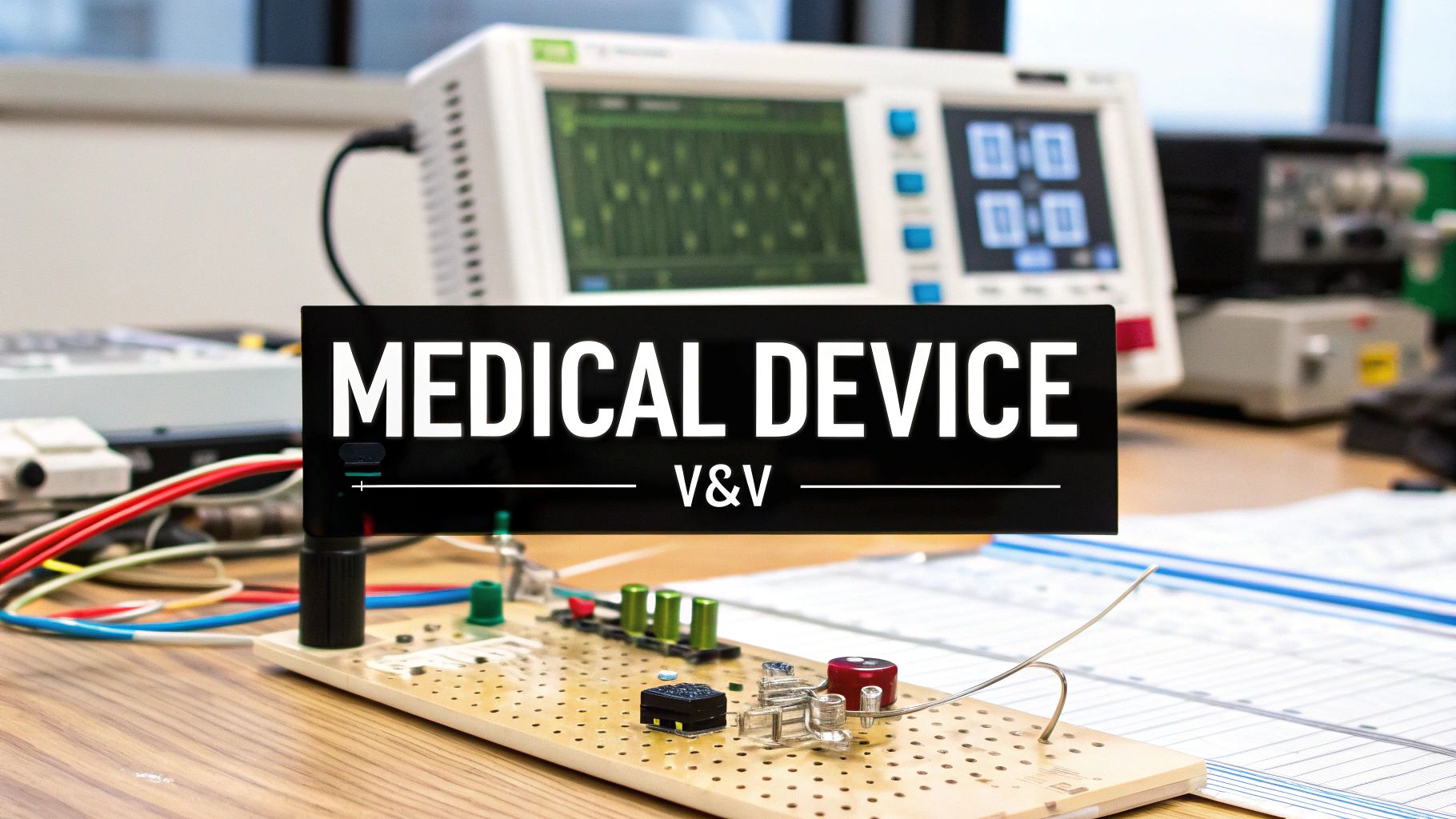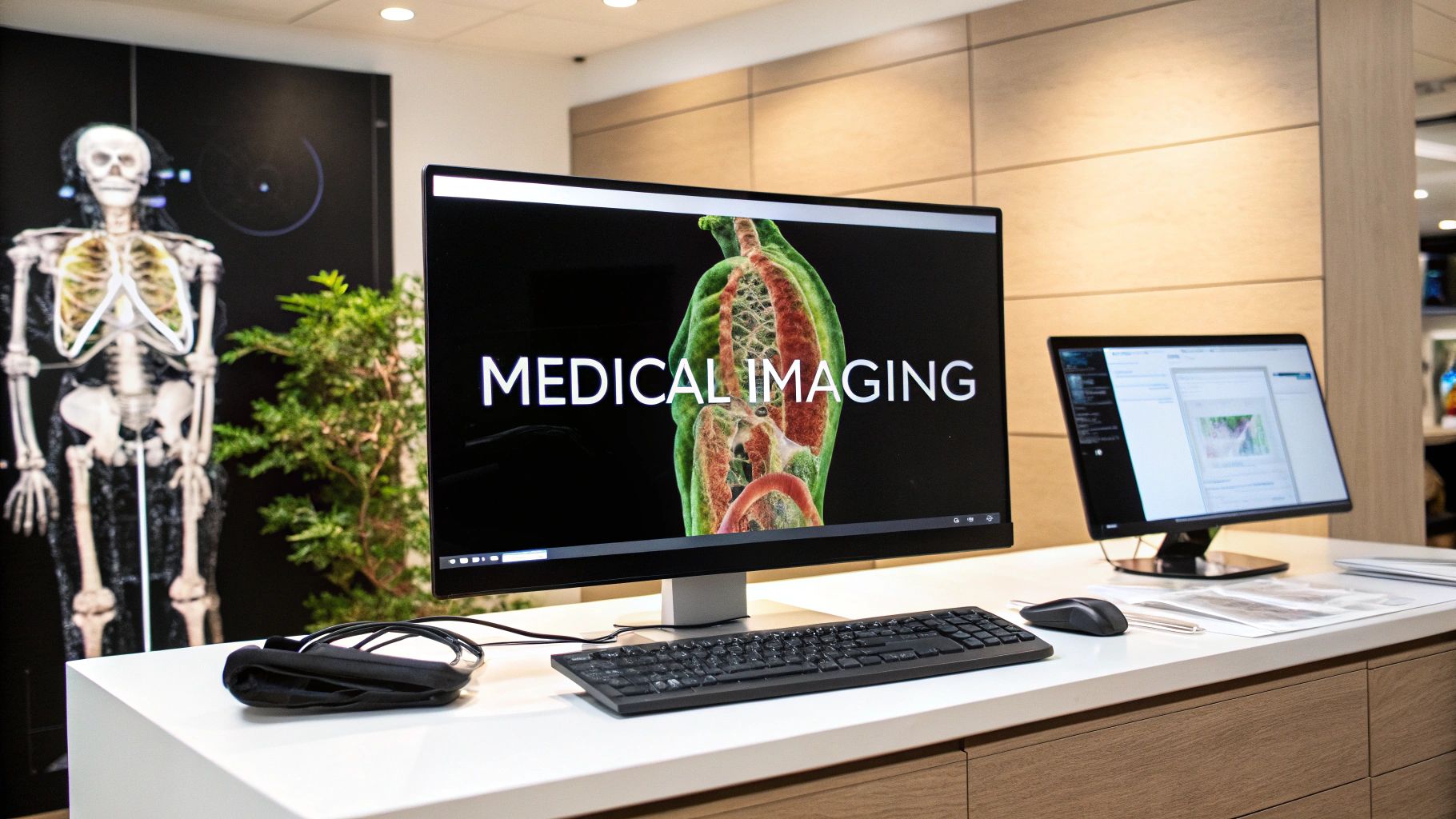The Quiet Revolution: AI Reshaping Medical Diagnosis
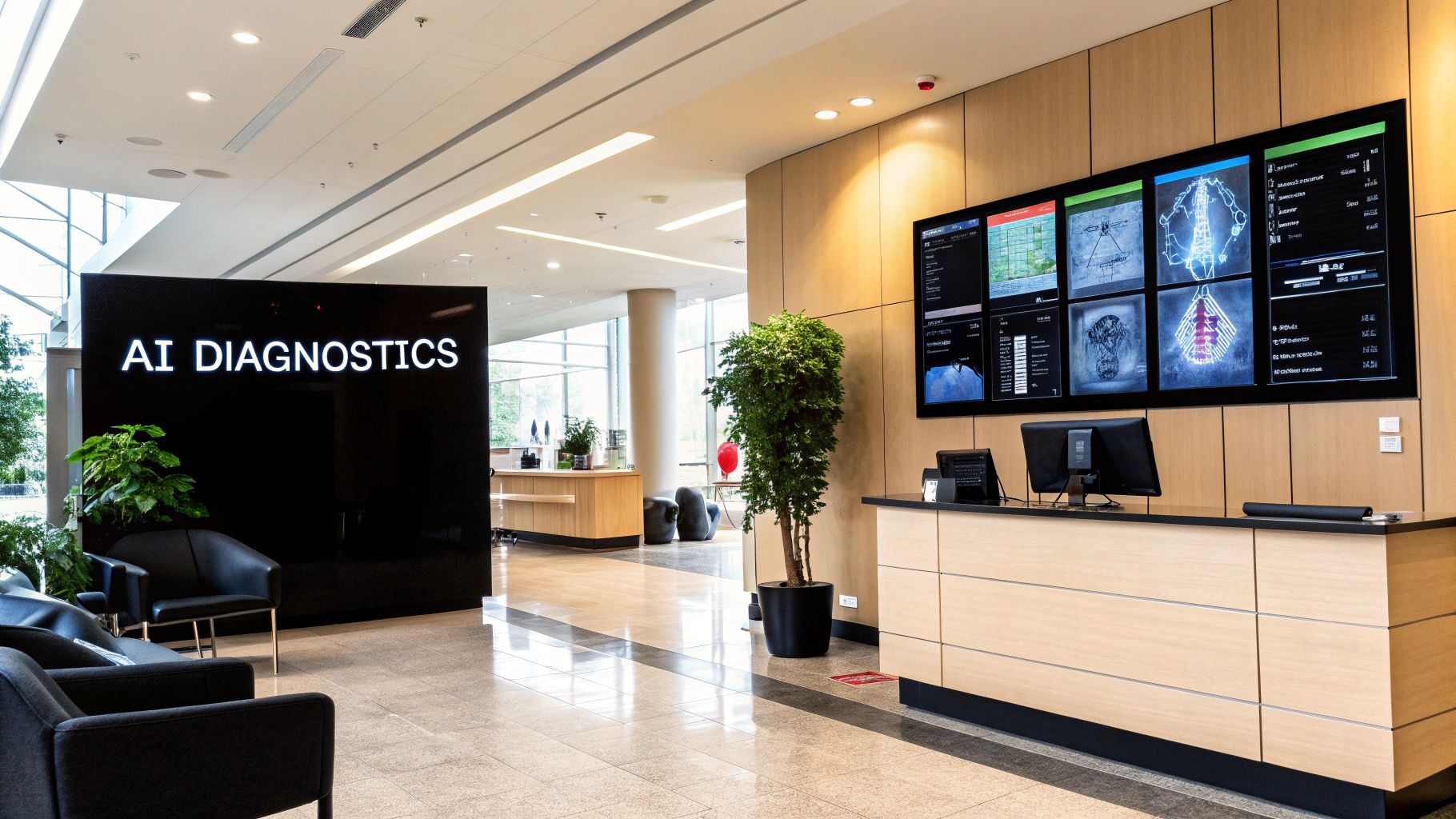
The medical diagnostic landscape is steadily evolving, thanks to the integration of artificial intelligence (AI). AI in medical diagnostics is no longer a futuristic vision; it's a practical tool currently enhancing how physicians diagnose and treat various conditions. This marks a shift from traditional, often lengthy diagnostic processes to AI-assisted approaches. These technologies are impacting clinical decisions across diverse medical specialties, leading to faster, more accurate diagnoses and improved patient care.
AI's Expanding Influence in Diagnostics
A key advantage of AI in medical diagnostics is its capacity to rapidly and accurately analyze extensive datasets. This is especially valuable in fields like radiology and pathology, where interpreting complex images can be difficult and time-sensitive. AI algorithms can detect subtle patterns and abnormalities that might escape human observation, facilitating earlier and more precise diagnoses.
For instance, AI can identify minute variations in medical scans that indicate early signs of cancer or other diseases, which could otherwise be overlooked. This early detection is vital, allowing for prompt treatment and substantially better patient outcomes.
The market's remarkable growth underscores the rapid advancement and widespread adoption of AI in medical diagnostics. Valued at $1.33 billion in 2023, the market is projected to hit $1.71 billion in 2024, and a significant $4.72 billion by 2029, at a 22.5% compound annual growth rate (CAGR). This expansion is spurred by factors including government support for AI integration, increased funding for AI-focused businesses, and growing cross-industry partnerships. However, challenges like the shortage of skilled AI professionals and ongoing regulatory uncertainties still need to be addressed. More detailed statistics can be found here: AI-Driven Medical Diagnostics Market Growth
Impact on Clinical Decision-Making
Integrating AI isn't about replacing physicians; it's about equipping them with advanced tools. AI algorithms can analyze patient data, medical images, and even genetic information to provide clinicians with a comprehensive understanding of a patient's health. This can lead to better-informed treatment strategies, individualized care plans, and improved patient results.
Furthermore, AI can optimize diagnostic workflows, minimizing patient wait times and allowing clinicians to concentrate on complex cases. This enhanced efficiency translates to quicker diagnoses and treatment initiation, particularly crucial in urgent medical scenarios. As AI continues to develop, its influence on medical diagnostics holds even greater promise, reshaping the future of healthcare.
Seeing the Invisible: How AI Transforms Radiology
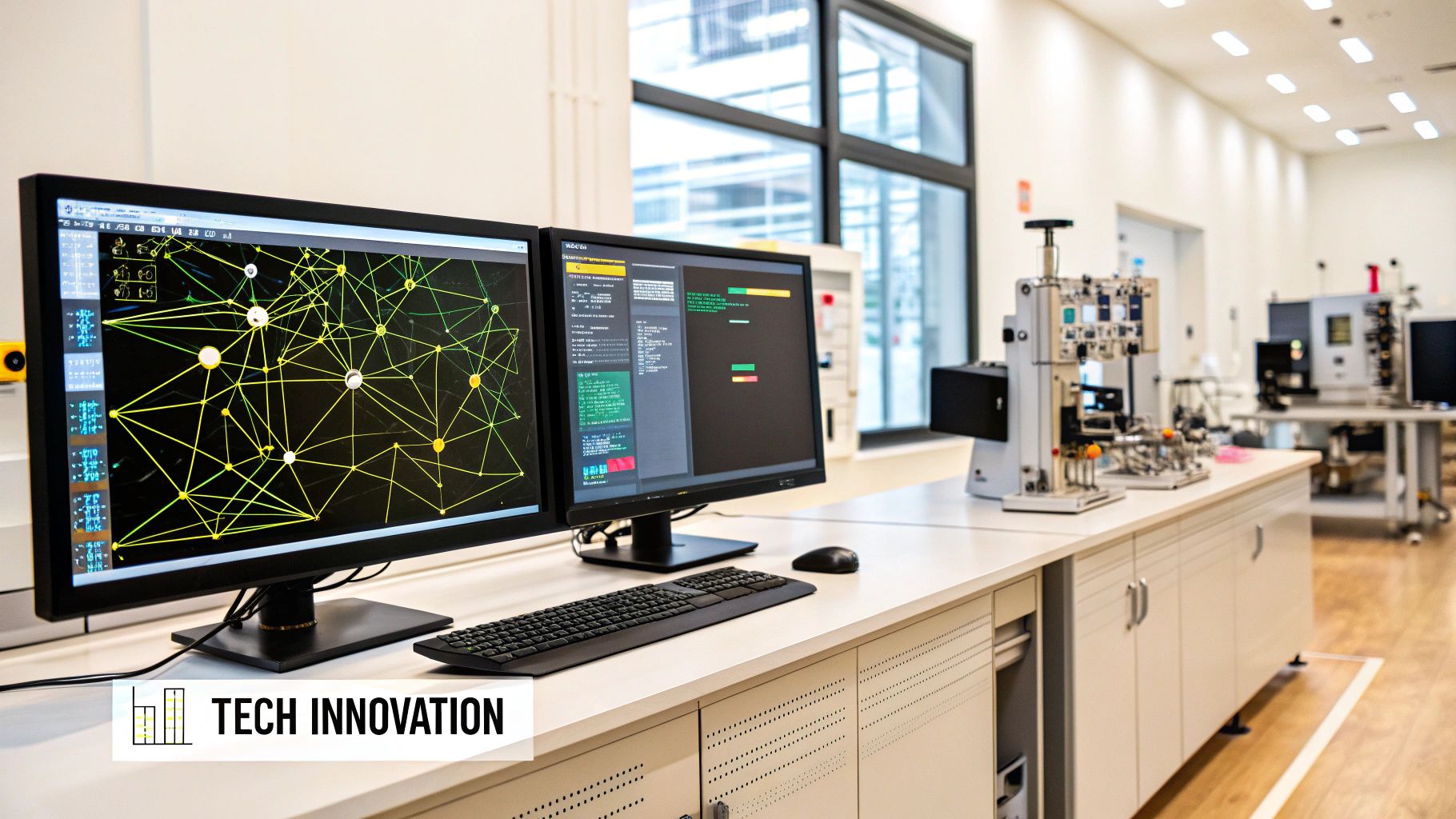
Radiology stands as a critical medical field where Artificial Intelligence (AI) is making remarkable progress. These advancements are impacting diagnostics in previously unforeseen ways, offering radiologists new tools and insights. Think of AI as providing a powerful lens, enabling medical professionals to see details easily missed by the human eye. This technology is reshaping how radiologists analyze medical images, detect subtle abnormalities, and ultimately, diagnose and treat patients.
AI's Impact on Image Analysis
AI algorithms excel at processing vast amounts of data. This includes the complex images generated by X-rays, CT scans, MRIs, and ultrasounds. This capability allows AI to identify minute abnormalities that might be overlooked by even the most seasoned radiologists.
For instance, AI can detect early-stage lung nodules barely visible in a CT scan, or subtle signs of breast cancer in a mammogram. Early detection is paramount for timely treatment and substantially improves patient outcomes. AI is also invaluable in detecting nascent brain tumors and cardiovascular issues.
These algorithms discern patterns and anomalies in images that are often too subtle or complex for human observation. AI can aid in diagnoses earlier than traditional methods, which sometimes only confirm suspicions once symptoms become more pronounced and potentially more difficult to treat. This is particularly important for conditions where early detection significantly affects patient survival and quality of life. Learn more about how AI enhances accuracy and efficiency in medical diagnosis: AI Diagnostics Transforming Health Outcomes
The table below provides a comparison of traditional and AI-assisted diagnostic metrics:
AI Impact on Radiology Diagnosis
Comparison of traditional versus AI-assisted diagnostic metrics in radiology
| Diagnostic Metric | Traditional Approach | AI-Assisted Approach | Improvement |
|---|---|---|---|
| Early-stage lung nodule detection | Limited by human visual perception | AI algorithms can identify subtle nodules missed by the human eye | Increased sensitivity and earlier detection |
| Breast cancer detection in mammograms | Relies on radiologist expertise and can miss subtle indicators | AI can highlight subtle patterns indicative of early-stage cancer | Improved accuracy and early diagnosis |
| Brain tumor detection | Difficult to detect nascent tumors | AI algorithms can identify patterns and anomalies indicative of early tumors | Earlier diagnosis and intervention |
| Cardiovascular issue detection | Limited ability to detect subtle anomalies | AI can identify complex patterns and subtle changes | Improved detection of early-stage issues |
The key insights from the table above highlight the advantages of AI-assisted approaches in radiology. Specifically, AI contributes to earlier detection and improved accuracy across various diagnostic metrics. This leads to faster intervention, better treatment outcomes, and improved patient prognosis.
Smart Triage and Reduced Burnout
Beyond enhancing diagnostic accuracy, AI streamlines workflows in radiology departments. Smart triage systems driven by AI prioritize urgent cases, ensuring patients requiring immediate attention are seen first. This significantly reduces treatment delays and leads to better patient outcomes, particularly in emergencies.
AI also helps radiologists manage their workload. By automating routine tasks like image analysis and measurement, AI allows radiologists to concentrate on more complex cases and patient interactions. This improves efficiency and reduces the risk of burnout from overwhelming caseloads, a significant concern in the medical profession. The influence of AI in radiology extends beyond improved diagnostics; it promotes a healthier and more sustainable work environment for healthcare professionals.
Beyond the Microscope: AI in Pathology

Just as radiology saw a dramatic shift with the adoption of AI, pathology is undergoing a similar transformation. This evolution mirrors the significant leap from traditional microscopy to the world of digital imaging. AI is becoming essential in pathology, significantly increasing the speed and accuracy of diagnoses. This translates to quicker results for patients and empowers physicians to make more informed treatment decisions.
AI-Powered Tissue Analysis
AI systems can now analyze digitized tissue samples with remarkable precision. These systems go far beyond simple magnification, identifying complex cellular patterns and critical biomarkers that can signal disease. Think of it as having a highly detailed, tireless assistant capable of spotting subtle details often missed by the human eye. This ability to analyze minute features creates new diagnostic avenues and facilitates earlier disease detection.
For example, in diagnosing cancer, AI algorithms can differentiate cancerous cells from non-cancerous ones, improving diagnostic accuracy. Furthermore, AI can evaluate important tumor characteristics, such as size, grade, and stage—crucial factors in creating effective treatment strategies. AI in medical diagnostics offers a more comprehensive understanding of diseases, not just identification.
Addressing the Pathology Gap
A rising demand for pathology services coupled with a global shortage of trained pathologists has created a substantial gap in healthcare. AI offers a potential solution to this challenge. By automating routine tasks, AI allows pathologists to dedicate their expertise to more complex cases requiring their expert judgment.
This empowers pathologists to manage larger caseloads without compromising the quality of their work. It also extends world-class diagnostics to underserved areas with limited access to trained professionals, effectively democratizing access to quality pathology services.
Revolutionizing Clinical Laboratories
The integration of AI into clinical laboratories is significantly impacting test interpretation. AI algorithms can discern intricate patterns across various biomarkers, presenting a more holistic understanding of a patient's health. In addition, AI can automatically flag critical results needing immediate attention. This rapid identification of urgent cases allows for prompt treatment and improved patient outcomes.
For example, AI can analyze blood test results to detect individuals at risk of developing sepsis, a life-threatening condition. This proactive identification enables timely intervention, potentially saving lives. AI is reshaping pathology and laboratory medicine, improving diagnostic speed and accuracy while enhancing overall patient care.
Finding Disease Before Symptoms Appear: AI Detection
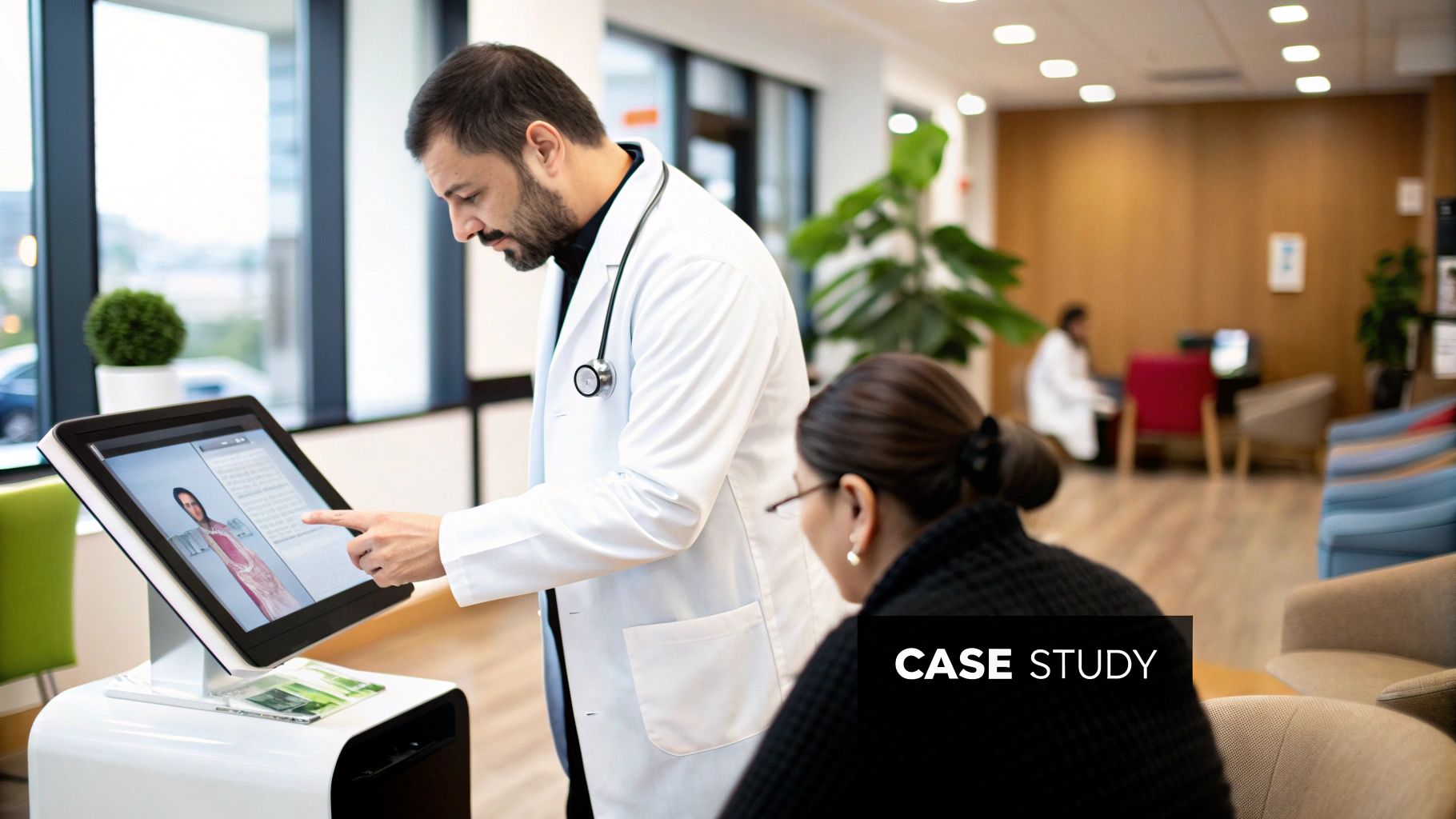
Early disease detection has always been a critical objective in medicine. The integration of AI into medical diagnostics is now making this a practical reality. This technology can identify subtle disease indicators often overlooked by traditional methods. This proactive approach is reshaping the healthcare landscape.
AI's Role in Early Disease Detection
AI algorithms excel at analyzing complex patterns in various medical datasets. These datasets can include medical imaging, genetic information, electronic health records, and even patient-reported symptoms. AI systems can pinpoint individuals at risk months or even years before conventional methods, providing a crucial window for early intervention.
For example, in cancer screening, AI can detect minute changes in tissue or blood work that might signal the presence of cancer before any noticeable symptoms emerge. This early detection is essential for successful treatment and significantly improves a patient's chances of survival. AI can also analyze patient data to predict cardiovascular risks, enabling physicians to intervene before potential heart attacks or strokes.
Transforming Disease Identification
AI is proving to be extremely valuable in the early identification of complex conditions. In neurodegenerative diseases like Alzheimer's, AI can analyze brain scans to identify subtle changes that indicate the disease's early stages. This early detection is vital for initiating treatment and slowing the disease's progression. This capability extends to infectious disease surveillance as well.
AI can analyze data from various sources, including social media and public health records, to detect emerging outbreaks before they become widespread. This rapid identification is essential for containing infectious diseases and preventing large-scale epidemics. AI in medical diagnostics is shifting the focus from reactive treatment to proactive prevention.
Population-Level Screening and Public Health
The benefits of AI reach beyond individual diagnoses to encompass population-level screening programs. By integrating AI into these programs, public health initiatives can identify at-risk individuals within large populations and focus interventions more efficiently. This proactive approach can significantly improve public health outcomes.
This means entire communities can benefit from early disease detection and preventive care. Early intervention has a proven connection to improved treatment outcomes for numerous diseases. AI is not only revolutionizing individual patient care but also reshaping public health strategies. It presents a powerful opportunity to create healthier communities by detecting and addressing diseases at their earliest stages.
Breaking Through Barriers: Making AI Diagnostics Work
Implementing AI in medical diagnostics offers incredible potential, but it's not without its challenges. This section explores the key hurdles healthcare organizations face when adopting AI diagnostic systems and offers practical strategies for overcoming them. These hurdles span technical integration, regulatory compliance, and financial considerations. Successfully addressing these is essential for unlocking the full power of AI in medical diagnostics.
Technical Integration and Data Management
Integrating AI with existing healthcare IT systems can be a complex undertaking. Many hospitals and clinics rely on older systems not designed for compatibility with AI algorithms. This can necessitate substantial investment in upgrading or replacing these systems, creating a significant technical barrier. Furthermore, AI algorithms require extensive, standardized datasets for training and validation. Unfortunately, medical data is often fragmented, inconsistent, and stored across various formats, creating substantial data standardization challenges. Finally, AI systems, especially those utilizing deep learning, require significant computing power. Meeting these computational demands can strain institutions with limited resources.
Navigating the Regulatory Landscape
The regulatory landscape for AI in medical diagnostics is still evolving. The FDA, for example, has issued guidance on AI-enabled medical devices, but the approval pathways are subject to change. This creates uncertainty for both developers and healthcare organizations. Adding to the complexity are the varying regulations across different countries. Medical device manufacturers must navigate a complex web of international frameworks, adding complexity and cost to implementation. This highlights the need for ongoing dialogue between regulators, developers, and healthcare providers to establish a supportive and suitable framework for AI in medical diagnostics.
Addressing Workforce Concerns
Integrating AI into diagnostic workflows impacts the roles of healthcare professionals. Understandably, this often leads to workforce concerns about job displacement and the need for upskilling. Addressing these concerns proactively is essential. Leading institutions are investing in comprehensive training programs to equip their staff with the skills to work effectively alongside AI systems. This not only reduces anxiety but also empowers professionals to embrace AI as a valuable tool. Moreover, existing roles are evolving to include managing and interpreting AI-generated insights, demonstrating that AI integration can create new opportunities within the healthcare workforce.
Financial Realities and ROI
Implementing AI diagnostics requires significant upfront investment. This includes the costs of software, hardware, integration, and staff training. There are also ongoing costs associated with data maintenance and system updates. Another financial challenge involves reimbursement policies. Current reimbursement models may not adequately cover the use of AI-powered diagnostic tools. This can create a financial barrier, especially for smaller healthcare organizations. However, demonstrating a clear return on investment (ROI) can help justify the initial costs. By showcasing how AI improves diagnostic accuracy, reduces errors, and streamlines workflows, institutions can demonstrate the long-term financial benefits of AI integration. These benefits can include reduced operational expenses, improved patient outcomes, and increased revenue.
To understand the challenges further, let's look at the following table:
Major Barriers to AI Adoption in Diagnostics
Overview of key challenges and potential solutions for healthcare organizations
| Challenge Category | Specific Barriers | Potential Solutions | Implementation Timeline |
|---|---|---|---|
| Technical Integration and Data Management | Legacy system incompatibility, data fragmentation and standardization, high computational demands | System upgrades/replacements, data standardization initiatives, cloud computing solutions | Ongoing/Variable (depending on the specific solution) |
| Navigating the Regulatory Landscape | Evolving FDA guidelines, international regulatory variations | Collaboration between regulatory bodies, developers, and healthcare providers; development of clear regulatory pathways | Ongoing/Long-term |
| Addressing Workforce Concerns | Job displacement fears, need for new skills | Comprehensive training programs, development of new roles focused on AI management and interpretation | Ongoing/Short- to medium-term |
| Financial Realities and ROI | High upfront investment costs, unclear reimbursement policies | Demonstrating clear ROI through improved accuracy, reduced errors, and streamlined workflows; advocacy for updated reimbursement models | Ongoing/Medium- to long-term |
This table summarizes the major barriers to AI adoption in diagnostics, providing a clearer picture of the challenges and potential solutions. By addressing these challenges head-on, the healthcare industry can pave the way for wider and more effective use of AI in diagnostics.
The Next Frontier: AI Diagnostics Beyond Today
AI in medical diagnostics is rapidly progressing, evolving from single-use applications to a more integrated and comprehensive approach. This shift promises to reshape healthcare delivery and change how we understand diagnosis.
Multimodal AI: Integrating Diverse Data for a Holistic View
Current AI diagnostic tools often focus on one type of data, like medical images or genomic data. The future of AI diagnostics lies in multimodal AI systems. These systems combine diverse data sources, including genomics, imaging, clinical records, and even social determinants of health, to paint a complete picture of a patient's condition. This holistic approach allows for more accurate diagnoses and personalized treatment strategies.
For example, a multimodal system could combine genetic predisposition data with lifestyle factors and imaging results to provide a highly individualized risk assessment for a specific disease. This goes beyond simply identifying a current illness, offering a broader understanding of individual health.
Explainable AI: Building Trust and Transparency
One challenge in adopting AI in medical diagnostics is the "black box" nature of many algorithms. Clinicians sometimes struggle to understand how an AI system reached a specific diagnosis, hindering trust and full utilization of the technology. Explainable AI (XAI) addresses this by clarifying the decision-making process of AI algorithms.
XAI techniques provide insights into the factors influencing an AI’s diagnosis, allowing clinicians to understand the system's reasoning. This transparency builds trust and lets clinicians validate the AI's findings, leading to greater acceptance of AI in clinical workflows. Clinicians can then confidently use AI insights, merging their expertise with the power of AI analysis.
Federated Learning and Edge Computing: Protecting Privacy While Enhancing Diagnostics
Data privacy is critical in healthcare. Federated learning offers a solution by training AI models on decentralized datasets without sharing sensitive patient data. Instead of moving data to a central server, federated learning brings the algorithm to the data. This lets multiple institutions collaborate on AI model development while maintaining patient privacy.
Edge computing, processing data locally on the device, further strengthens privacy. AI-powered diagnostic tools can operate directly on medical devices, like ultrasound machines or portable equipment, without sending data to the cloud or a central server. These technologies allow the creation of sophisticated AI diagnostics while protecting data.
Point-of-Care Diagnostics: Bringing AI to the Front Lines
AI is set to transform point-of-care diagnostics, particularly in remote or resource-limited areas. Portable AI-powered devices can deliver fast, accurate results at the patient's bedside or in community clinics, increasing access to advanced diagnostics.
Imagine a handheld device performing complex blood analysis or interpreting medical images instantly, even without specialized labs or trained personnel. This will change healthcare delivery, particularly in underserved communities, by providing quick diagnostic information to guide treatment decisions.
Wearable Technology and Continuous Monitoring: Redefining Diagnosis
Wearable technology, like smartwatches and fitness trackers, generates continuous streams of health data. AI algorithms can analyze this data to detect subtle changes that might signal early signs of disease, even before symptoms appear. This continuous monitoring could redefine medical diagnosis, shifting from episodic assessments to constant health surveillance.
For instance, AI could analyze smartwatch data to identify early signs of heart arrhythmias or sleep pattern changes indicating a health issue. This move toward continuous monitoring will enable more proactive and personalized healthcare, leading to early interventions and better patient outcomes.
Ready to integrate AI solutions into your medical imaging workflow? Discover how PYCAD can improve diagnostic accuracy and operational efficiency. Visit PYCAD today to learn more.

